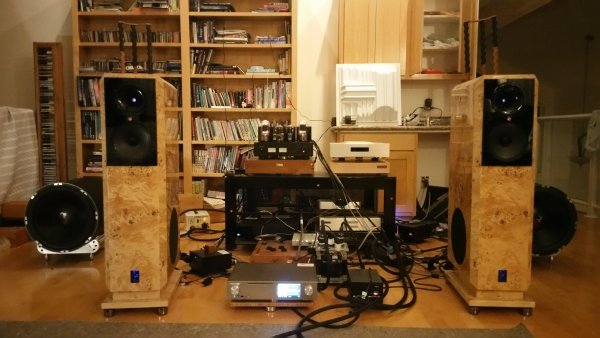I just picked one of the first Google results and didn't have time to search for a white paper, or read through a book from Geddes, etc..
If we can be clear, let me know if this is correct: A ported speaker with closed form foam (or an equivalent dense material) in the port(s) will yield less cone excursion that unstuffed port(s) up to the port tuned frequency? If this is true, unless your tuned port frequency is greater than the most common musical audio instruments' band (let's say >40Hz) your risk of extended excursion is low. This all of course depends on your level of preferred listening.
That last sentence is hard to understand, but I think so...
A ported box isn't designed to be used under it's tuning frequency, if it is the box loses "grip" on the woofer and you will get excessive excursion. Almost all pro speakers will include a filter to prevent this, many home speakers don't but I'm not really including this as a case, as most high end speakers will have lower tuning frequencies.
As far as your last post, IDK what to say, the evidence is in the article you posted yourself. The difference is only applicable around the tuning frequency of the port, but that's where a great majority of excursion is required. These are cold, hard facts that are widely accepted by every speaker designer and is apparent in every speaker simulation on the planet. The resistance to this baffles me. Robh's post is so far out in left field I don't even know what to say, it contradicts the most basic aspects of speaker design that are the first thing anyone interested in the subject learns, and are included in the most basic free simulation software.

Also, yes, some speakers are designed to be used either way, you'll just get a bit less SPLs sealed, and more IMD at higher SPLs, but that depends on the crossover point of the woofer. For a sub, IMD doesn't matter nearly as much as a woofer that runs up into the midrange, for example many CD horn designs pattern match the woofer around 800 Hz. So you can have signal at 800 Hz being modulated by information at 40 Hz, but if your box is a BR box the woofer will be moving less at 40 Hz and hence less distortion. So I'm not saying it's horrible to plug your ports, but there are tradeoffs.
And there are also speakers that have multiple ports with only some intended to be blocked, this changes the tuning frequency of the port(s), which has an effect on the low end rolloff, this can be used to linearize room response but doesn't change the speaker from ported to sealed. There are tradeoffs in this approach, namely increasing the tuning frequency makes it more likely for the speaker to get a signal below the tuning frequency, which will cause more excursion vs a lower tuning frequency in the same situation.















